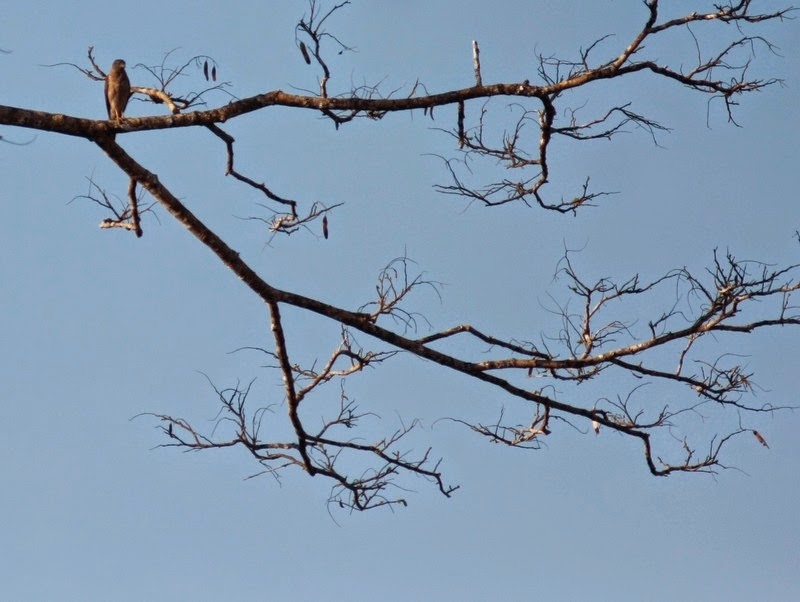This decent patch of forest, which is named after the kilometre marker on the trans-Sumba road, is famous for being a good spot to locate some of the forest endemics of Sumba, with the advantage of being outside of the national park. This means it comes with no extra costs, just the ojek from Lewa to get you there. Lewa is a good place to base yourself in while birding the interior of the island and can be easily reached from Waingapu (1.5 hour drive) or Tambolaka. We stayed at the birder-friendly homestay that is being run by Mama Kati (006285239910745), which we can highly recommend. It currently costs 300.000 IDR per person per night including three massive and delicious meals. Mama Kati can arrange everything from busses and ojeks to access to the national park, so basically everything to make the birding you are dying to do so actually happen. Also her guestbook holds a lot of information about the birding sites. Furthermore her garden holds Indonesian Honeyeater, Apricot-breasted Sunbird, Yellow-spectacled White-eye and Pale-headed Munia. Just make sure to call her in advance when staying here.
 |
| Apricot-breasted Sunbird (Cinnyris buettikoferi) showing it's apricot breast at Mama Kati's Homestay |
We arranged ojeks through Mama Kati to get from Lewa to km 51 for 50.000 IDR during the day and 75.000 IDR at night for the drop-off and pick-up. The ride takes 15 to 20 minutes and the ojek drivers that Mama Rewu arranges know the track that leads from the trans-Sumba road through grasslands to the forest patch. If you use another ojek driver look for a single house around km 51 on the Southside of the road (the right side when coming from Lewa). Behind that house (to the East) is a dirt track that leads to a patch of forest clearly visible in the south. Keep to the left on the track and within 15 minutes you will find yourself in a patch of degraded, but bird-wise interesting forest.
We birded this patch of forest twice, one morning and one evening, and saw a lot of interesting species including some endemics. After arriving at 6:45 at the track we birded this area until 11:00. After this it got very hot here and consequently the bird activity dropped considerably. When arriving at the edge of the forest we kept further to the left and followed the track through the forest, where we flushed an Elegant Pitta. This track leads to a big clearing where we spent quite a lot of time as it is a strategic place to search for perching pigeons in the morning as you can scan the treetops all around you at ease. We waited but 30 minutes and found a Red-naped Fruit-dove perched in one of the trees. What a beauty! A bit later we also found a second individual and two Sumba Green-pigeons that bolted out of the trees as soon as I raised my binoculars. Other interesting species observed at the clearing included Brown Goshawk, Black-naped Fruit-dove, Rainbow Bee-eater, Sumba (Russet-backed) Jungle-flycatcher Blood-breasted Flowerpecker of the distinct wilhelminae subspecies and Apricot-breasted Sunbird. We also heard many Cinnamon-banded Kingfishers calling, but did not find any at the clearing. We also found two Australian Koels here.
 |
| Adult Brown Goshawk (Accipiter fasciatus) |
 |
| One of the two stunning Red-naped Fruit-doves (Ptilinopus dohertyi) seen |
 |
| Male Australian Koel (Eudynamys orientalis) |
 |
| Female Red-backed Buttonquail (Turnix maculosus) foraging out in the open! |
Female and Juvenile Wallacean Cuckooshrikes (Coracina personata) (video made by Anna van der Kaaden)
In the evening we returned to this site again and walked straight to the clearing to search for nightbirds. We waited until it was properly dark and while doing so Cinnamon-banded Kingfisher, Elegant Pitta and Helmeted Friarbird where calling from everywhere. After a short wait a Mees’s Nightjar flew past without calling (the complete opposite of the birds we observed in Kisol, Flores, who did not want to shut up at all) and most unexpectedly: a Sumba (Australasian) Barn Owl glided past. When it was completely dark three or four Little Sumba Boobooks started calling, but none of them wanted to play. The actually more or less all fell silent as soon as we started the playback… We tried within the forest and at the forest edge again, but no response, from either Little Sumba or Sumba Boobook.
We enjoyed birding this patch of forest a lot, as it is easy to reach on your own and the birding is interesting and entertaining. Furthermore, it appears to be most reliable site to see the stunning Red-naped Fruit-dove.
We enjoyed birding this patch of forest a lot, as it is easy to reach on your own and the birding is interesting and entertaining. Furthermore, it appears to be most reliable site to see the stunning Red-naped Fruit-dove.

No comments:
Post a Comment